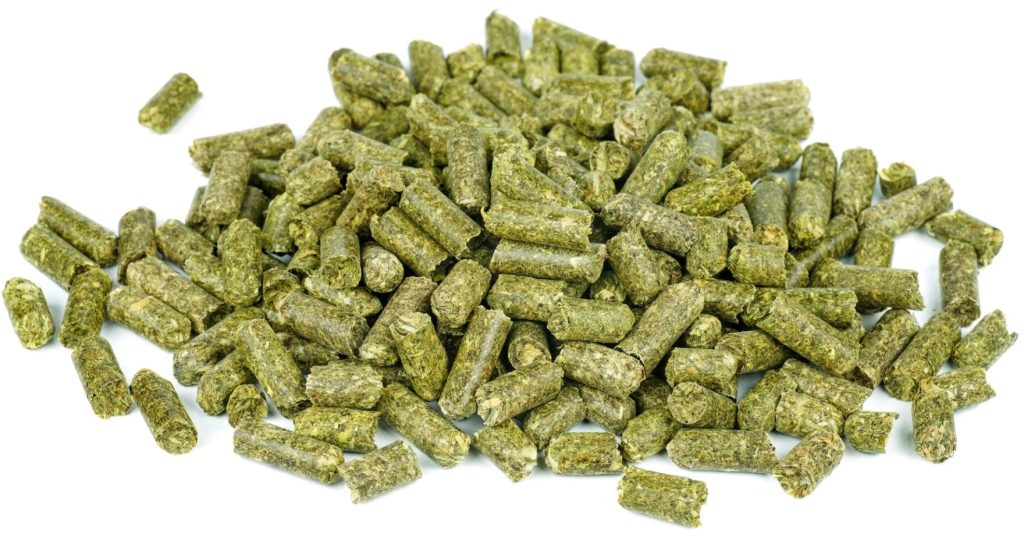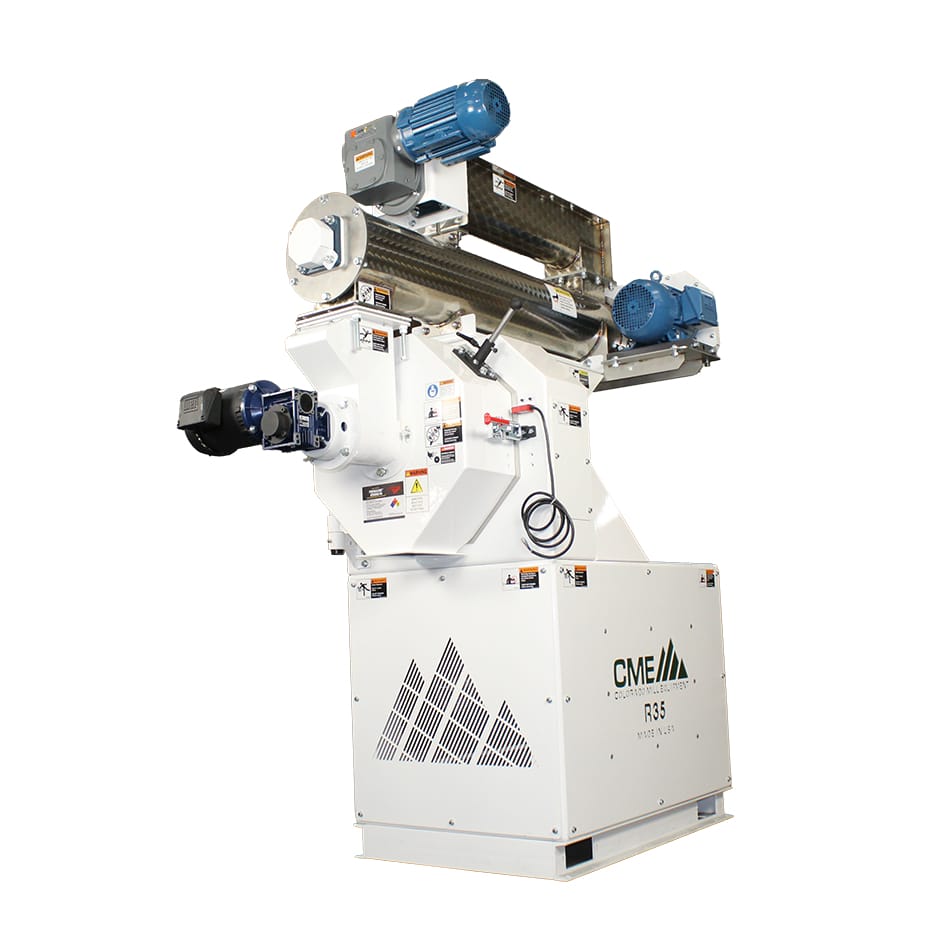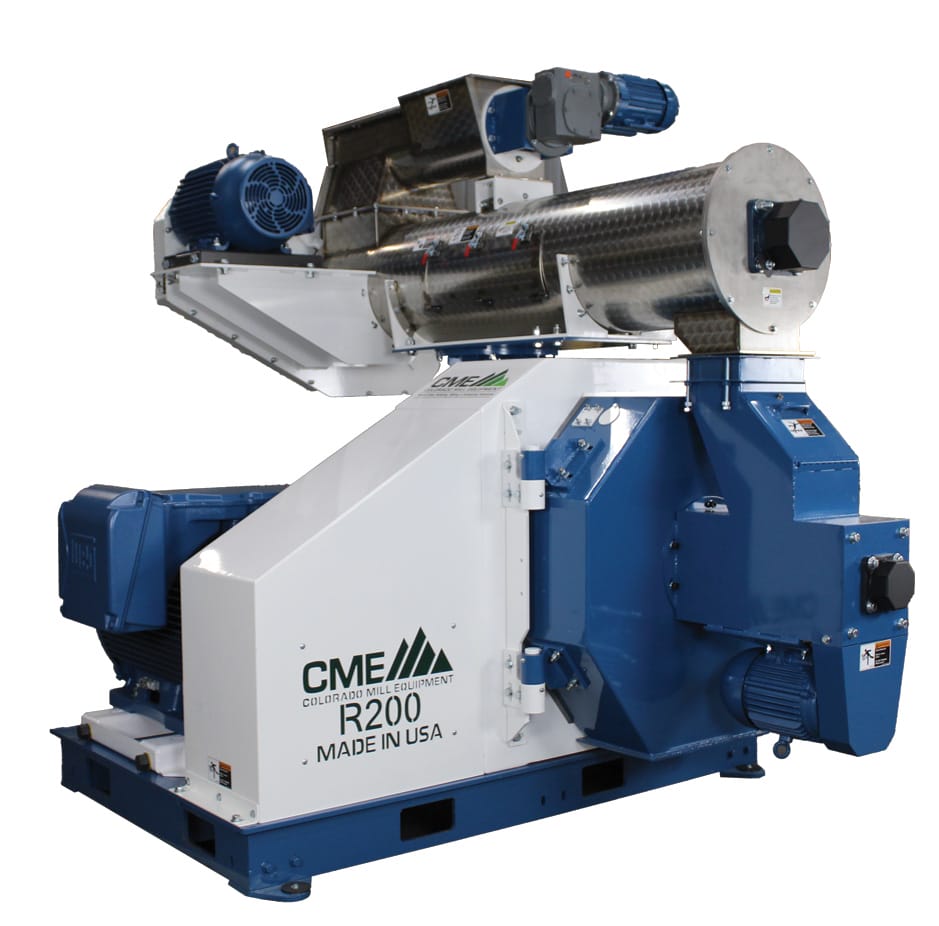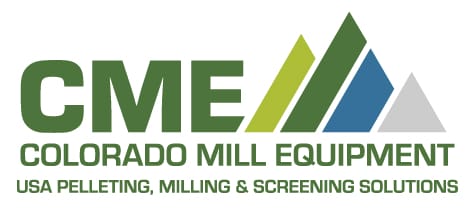
How to Make Alfalfa Pellets: A Step-by-Step Guide
Alfalfa pellets are a high-protein feed source commonly used for livestock, poultry, and small animals. They offer superior storage, reduced waste, and enhanced digestibility compared to traditional hay. If you’re looking to produce alfalfa pellets, this guide will walk you through the process and highlight the benefits of using CME’s R35 or R200 Pellet Mills for high-efficiency production.

Benefits of Alfalfa Pellets
- Nutrient-Rich: Retains essential vitamins and minerals.
- Less Waste: Eliminates issues like leaf loss in baled hay.
- Easy Storage & Handling: Compact and moisture-resistant.
- Versatile: Suitable for a variety of livestock and pet diets.
Step 1: Preparing the Alfalfa
Before pelletizing, the raw alfalfa must be processed properly:
- Harvest & Dry: Ensure moisture content is around 12-15% for optimal pelletization.
- Grind the Alfalfa: Use a hammermill to reduce the material to a uniform particle size.
- Conditioning: Some producers add binding agents or steam to enhance pellet durability.
Step 2: Pelletizing with CME’s Industrial Pellet Mills
Once prepped, the alfalfa is ready for pelletization using a high-performance mill.
Step 3: Cooling and Packaging
Once the pellets are formed, they need to be properly cooled to maintain integrity and prevent moisture buildup.
- Cooling Process: Use an industrial cooler to bring pellets to ambient temperature.
- Screening: Screeners remove fines and broken pellets for a consistent final product.
- Bagging & Storage: Store in dry conditions to maintain pellet quality.
CME’s High Performance Mills
CME R35 Pellet Mill (30 HP)

- Productivity: Designed to Produce More Than Any Other 10″ Pellet Mill
- Belt-Drive System: Ensures energy efficiency and durability.
- Precision Engineering: Produces uniform pellets with high throughput.
CME R200 Pellet Mill (200HP)

- Mid-Scale Efficiency: Ideal for farms and small to medium pellet production.
- Customizable Die Options: Allows for various pellet sizes.
- Engineered for Longevity: Built to withstand continuous use.
Why Choose CME for Alfalfa Pellet Production?
CME’s pellet mills are built with American-made precision engineering, ensuring high durability and efficiency. Whether you need a 400HP solution for large-scale production or a 200HP model for smaller operations, CME has the right equipment for your needs.
Ready to Start Producing Alfalfa Pellets?
Explore CME’s R35 and R200 Pellet Mills to take your production to the next level. Learn more here.
